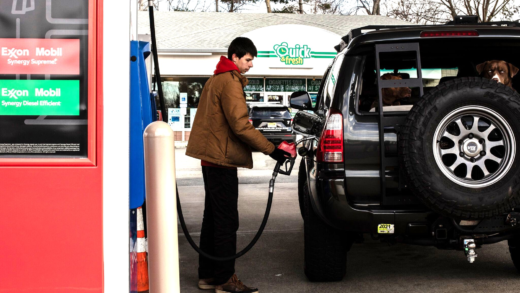The Dutch Reach is a technique that enhances bike safety by encouraging drivers to use their far hand to open car doors. This simple action prompts them to check for cyclists, reducing dooring accidents. To adopt the Dutch Reach, drivers should practice regularly, educate passengers, and dispel misconceptions about its necessity and effectiveness. By creating awareness, we can foster a culture of safety on the roads, benefiting all road users.
Understanding the Dutch Reach: What is it?
Dutch Reach is a simple yet effective technique aimed at enhancing bike safety. This method involves using the far hand (the hand furthest from the door) to open the car door. By doing so, drivers are naturally prompted to turn their bodies and check for oncoming cyclists or pedestrians before swinging the door open. This small adjustment can significantly reduce the risk of accidents caused by dooring, where a cyclist collides with an open car door.
The concept originated in the Netherlands, a country renowned for its bicycle-friendly infrastructure and culture. In fact, the Dutch are pioneers in promoting cycling as a safe and efficient mode of transportation. Statistics show that implementing the Dutch Reach has led to a noticeable decline in bike accidents in urban areas. For example, cities that have adopted this practice report up to a 25% reduction in cyclist injuries.
Despite its effectiveness, many drivers remain unaware of the Dutch Reach or misunderstand its purpose. Some might think it’s just a minor adjustment, but the reality is that this technique can save lives. It is crucial for drivers to recognize the importance of being vigilant and proactive when it comes to cyclists sharing the road.
In summary, the Dutch Reach is not merely a suggestion; it is a practical approach to enhancing safety for both drivers and cyclists. By incorporating this technique into everyday driving habits, we can create a safer environment for all road users.
How the Dutch Reach Works: Preventing Bike Crashes Effectively
Dutch Reach is a crucial technique for preventing bike crashes. By opening the car door with the far hand, drivers instinctively turn their bodies. This simple action allows them to glance behind, checking for cyclists or pedestrians. Studies indicate that this method can reduce dooring incidents, which is when a cyclist collides with an open car door. In fact, statistics reveal that cities adopting the Dutch Reach see a decrease in cycling accidents by up to 25%.
The effectiveness of the Dutch Reach lies in its ability to create a habit. When drivers consistently use this technique, they develop a heightened awareness of their surroundings. This proactive behavior can significantly decrease the chances of accidents. Moreover, the Dutch Reach not only benefits cyclists but also enhances the overall safety of all road users.
- Increased visibility for cyclists: By turning their bodies, drivers can spot cyclists approaching from behind.
- Encouraging mindfulness: Drivers become more aware of their actions and surroundings.
- Promoting a culture of safety: The Dutch Reach fosters a safer driving environment, benefiting everyone on the road.
Moreover, this technique is easily adoptable. Drivers can practice the Dutch Reach whenever they enter or exit their vehicles. By doing so, they contribute to a safer road ecosystem. It’s not just about preventing accidents; it’s about cultivating a mindset focused on safety.
In conclusion, implementing the Dutch Reach is an effective strategy for preventing bike crashes. Its simplicity and practicality make it an essential habit for all drivers. By embracing this method, we can enhance safety for cyclists and ensure a smoother coexistence on the roads.
Adopting the Dutch Reach: Tips and Misconceptions
Dutch Reach is a valuable technique that can greatly enhance road safety, yet many drivers have misconceptions about its application. To effectively adopt this method, it’s essential to understand its principles and address common misunderstandings.
First, let’s discuss some practical tips for incorporating the Dutch Reach into daily driving habits:
- Practice makes perfect: The more you use the Dutch Reach, the more it becomes a habit. Practice opening the door with your far hand every time you enter or exit your vehicle.
- Educate passengers: Make sure your passengers understand the importance of the Dutch Reach. Encourage them to use this technique when exiting the car.
- Use reminders: Consider placing a sticker or note inside your car to remind yourself to use the Dutch Reach. This can serve as a helpful cue until it becomes second nature.
- Lead by example: If you’re a driving instructor or frequently carpool with others, demonstrate the Dutch Reach to encourage others to adopt this technique.
Addressing misconceptions is equally important. Some common myths include:
- It’s unnecessary: Many drivers believe that they can simply look in their mirrors. However, mirrors do not provide a complete view of approaching cyclists, making the Dutch Reach essential.
- It’s only for cyclists: While the Dutch Reach is particularly beneficial for cyclists, it also enhances overall road safety for pedestrians and other drivers.
- It takes too much time: In reality, using the Dutch Reach only adds a fraction of a second to the process of exiting the car, which is minimal compared to the potential for preventing accidents.
In conclusion, adopting the Dutch Reach is not just about safety; it’s about creating a culture of awareness and responsibility on the road. By implementing this technique and dispelling common misconceptions, we can significantly reduce the risk of bike accidents and promote a safer environment for everyone.





Comments are closed.